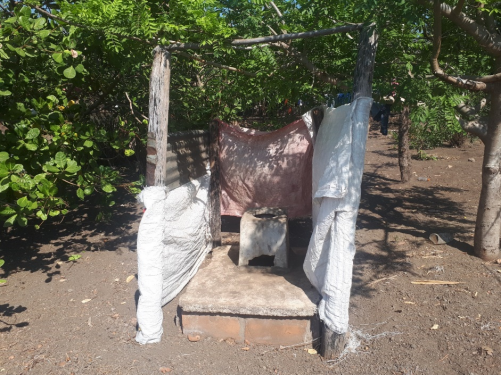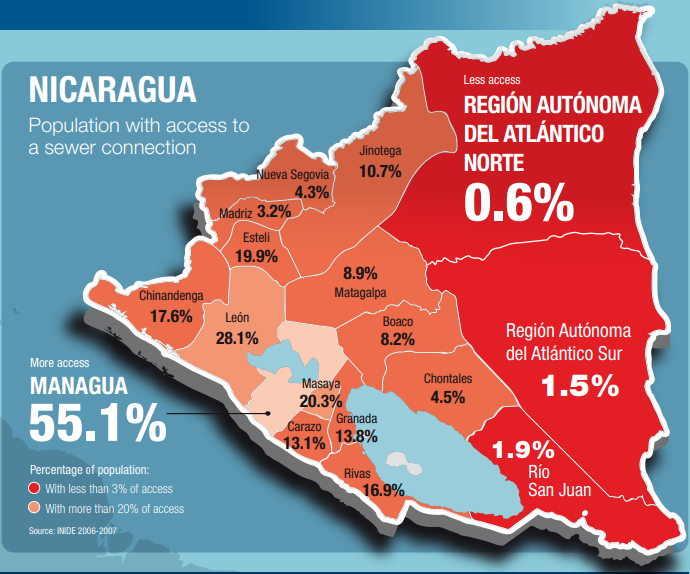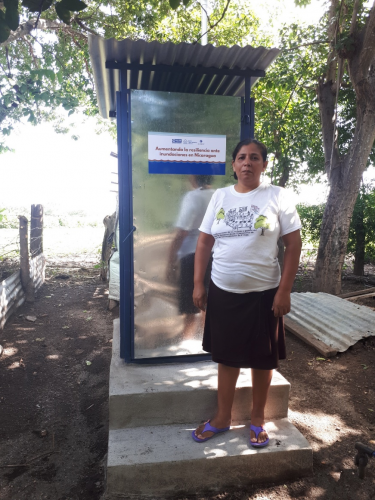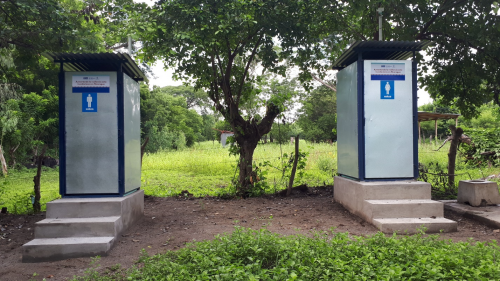Find out about the important role access to sanitation facilities plays in building community flood resilience, and the work Plan International Nicaragua and partners have done to provide communities with flood-proof latrines that will keep them safe and healthy during floods, and in dry times.
Plan International (Plan) is a member of the Zurich Flood Resilience Alliance. As such we’re implementing the project “Enhancing Flood Resilience in Central America” in four communities in Nicaragua.
We use the Flood Resilience Measurement for Communities (FRMC) to, together with the communities, measure their existing resilience and identify interventions that can enhance it. During this process we learned that the lack of adequate latrines, commonly used in rural regions in Nicaragua, affect people living in the communities, especially girls, adolescents and young women.

Insufficient access to water and sanitation during floods
Together with the Nicaraguan Institute of Territorial Studies (INETER) we carried out a study to identify the impact of flooding on the water and sanitation systems in the communities we work with.
We found that 44.2% of the families surveyed do not have latrines in the first place. The remaining population (55.8%) mentioned that they do have access to latrines, but that these are predominantly in bad condition.
Across Nicaragua, inadequate sanitation coverage is a risk factor for many people, especially in rural areas. In Chinandega, the region where we’re working, only 17.6% of the population were connected to a sewer in 2007. Those not connect use shared facilities, continue to use inadequate facilities, or, in some cases, defecate in the open. Lack of adequate bathrooms (latrines) causes serious health problems and leads to water pollution.

Based on these findings, Plan, INETER and community representatives decided to construct new latrines that will provide safe access to sanitation facilities in normal and emergency situations. They will also reduce the risk of drinking water contamination.
Old latrines that overflow during floods
I am the mother of a disabled child. In the event of a flood, it used to be very difficult to use our latrine, and my son once had an accident. I am very happy that my family has now been blessed with a good latrine.
– Brenda
Brenda is one of the more than 4,500 people we directly work with in Nicaragua. We spoke to her about how the construction of flood-proof latrines allows her family and others in the community to be more resilient to flooding.

Brenda told us that the latrines in her community used to be in bad condition. When it rained heavily many latrines would collapse. Sometimes flood water levels would exceed the capacity of the latrine, causing feces and waste to overflow. This dirty water would contaminate the community’s wells which led to an increase in illnesses, especially among the children.
Providing the community with the flood-proof latrines and knowledge they need
With the support of INETER, Plan has facilitated the construction of 45 latrines in the four communities we work with serving the most vulnerable households as well as schools. These will contribute to the communities’ flood resilience capacities because the way they are built they are less likely to overflow.
Two latrines were installed at the school in the community where Brenda lives. The construction of the latrines has been complemented with a campaign promoting personal hygiene and health in these communities. We’re delivering this campaign together with the Ministry of Education and the Ministry of Health at the municipal level. Children in the primary schools learn about topics like hand washing, proper latrine use, and maintenance to help facilitate the proper use and management of latrines in the long term.

New flood-proof latrines keep community members healthy
The new latrines should improve community members’ health both during and after floods. Brenda envisions this having a lasting impact on the quality of life for their children, and their families in turn. Brenda’s family has committed to take care of the latrine, make good use of it, and take other precautions, like regularly washing hands, which contribute to the prevention and reduction of diseases in normal and emergency situations.
I am the coordinator of the Local Committee for Disaster Prevention and Response (COLOPRED). As a leader, I feel very proud of my community because we work as a team at all times. We are fully involved in decision making in the project activities and supported in the construction of the latrines. Also, it does not end here. We participated in trainings on the proper handling of latrines, too.
– Brenda reflecting on the project

Comments